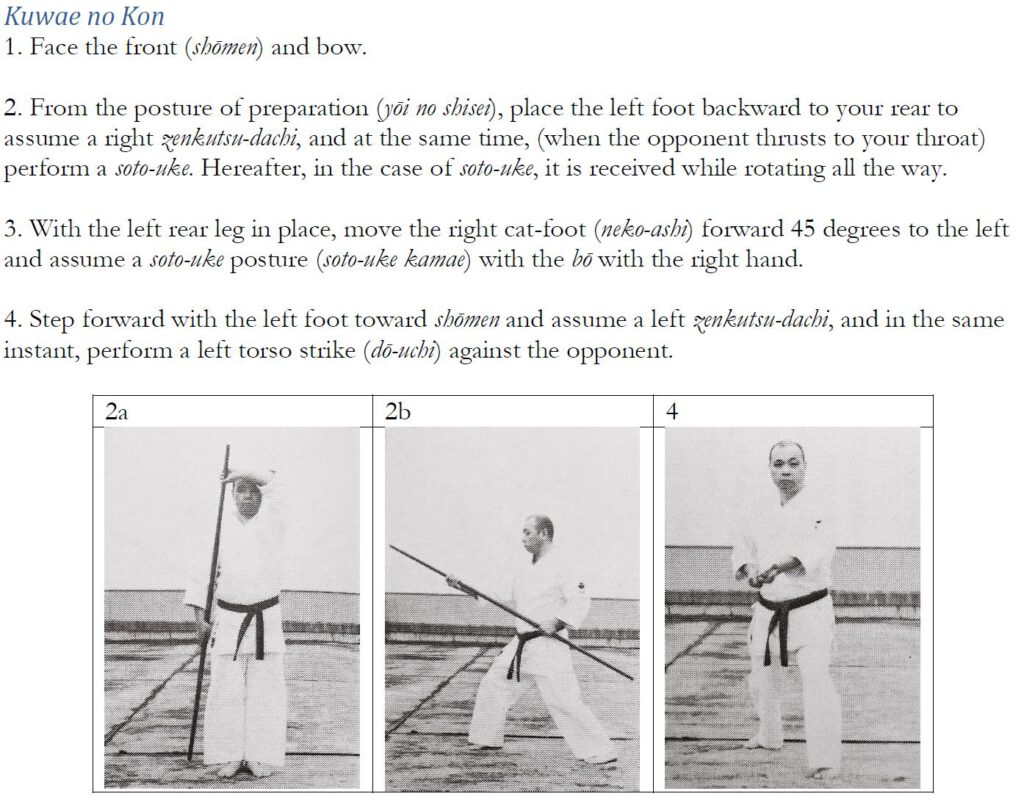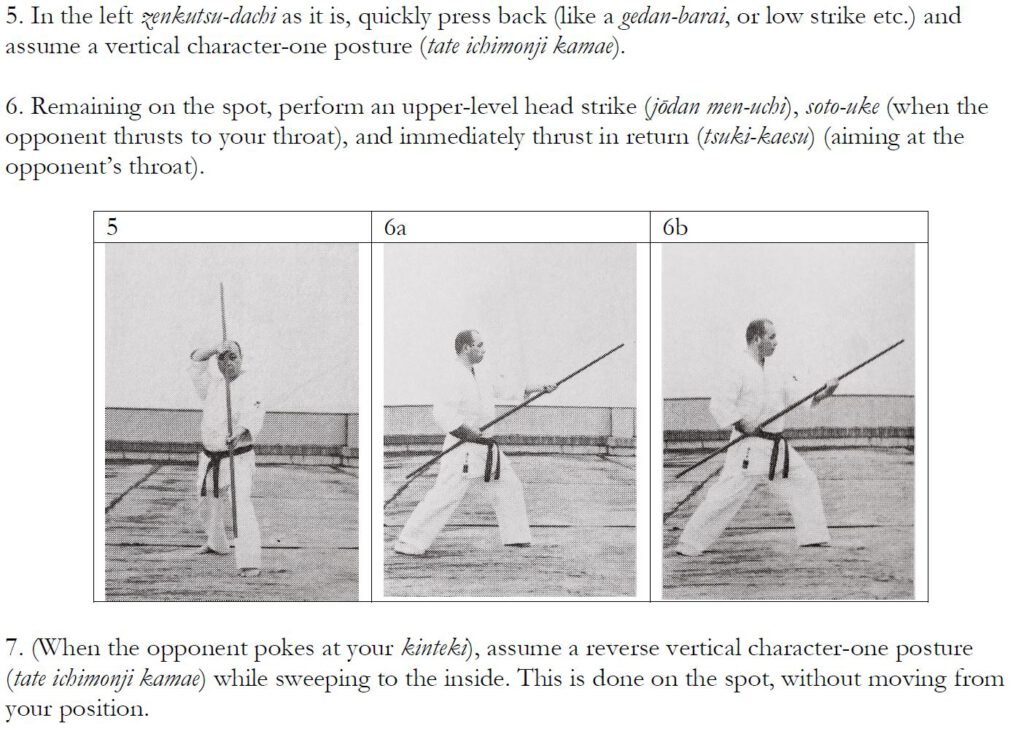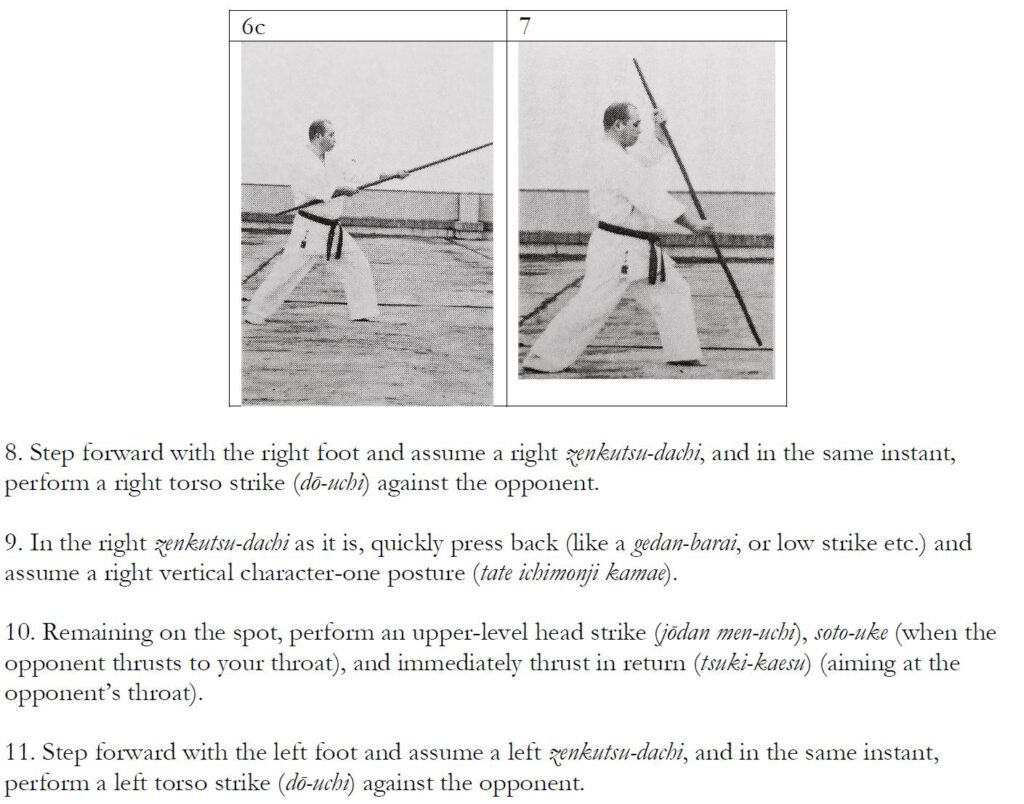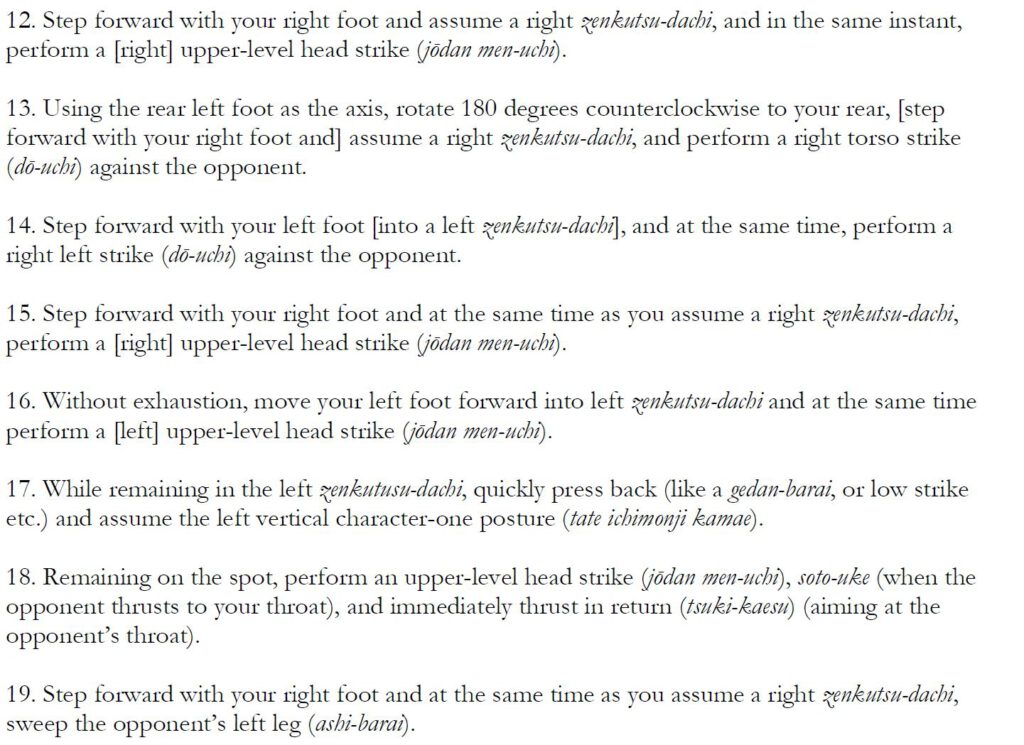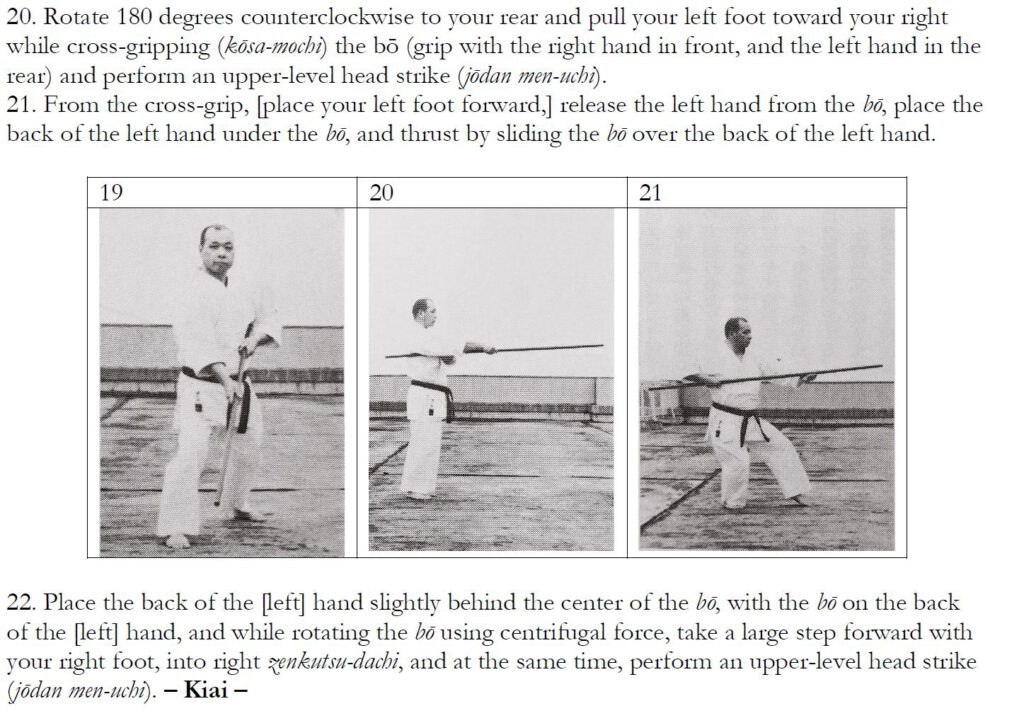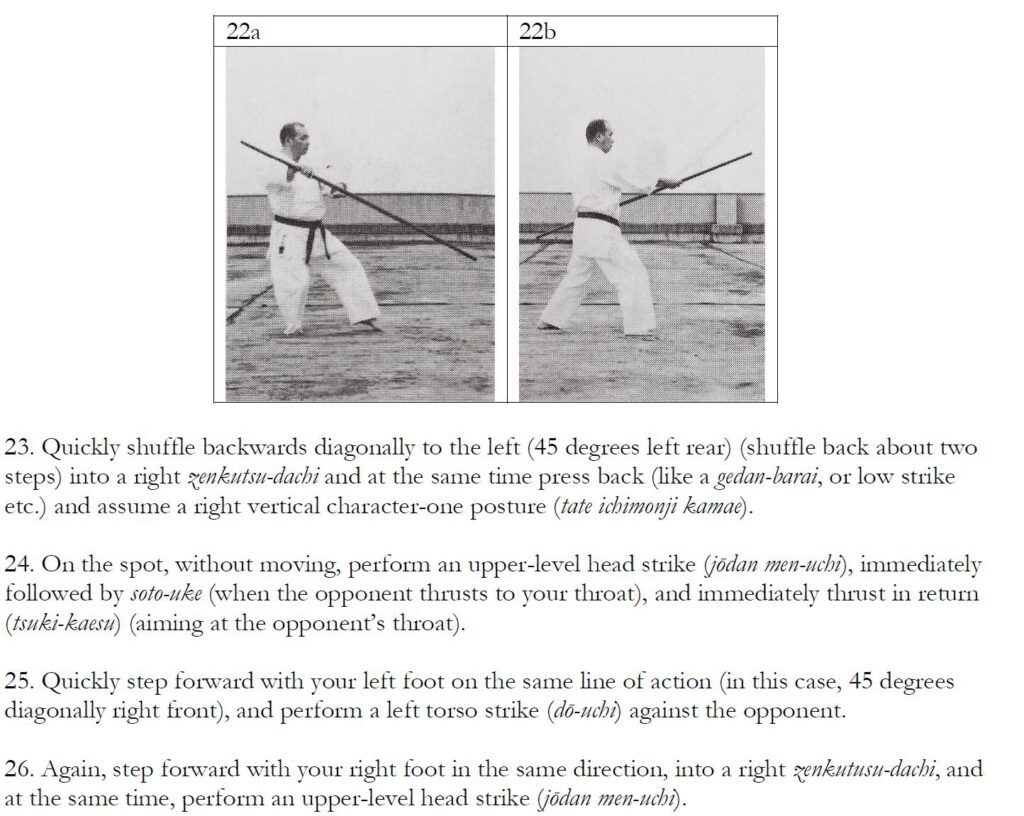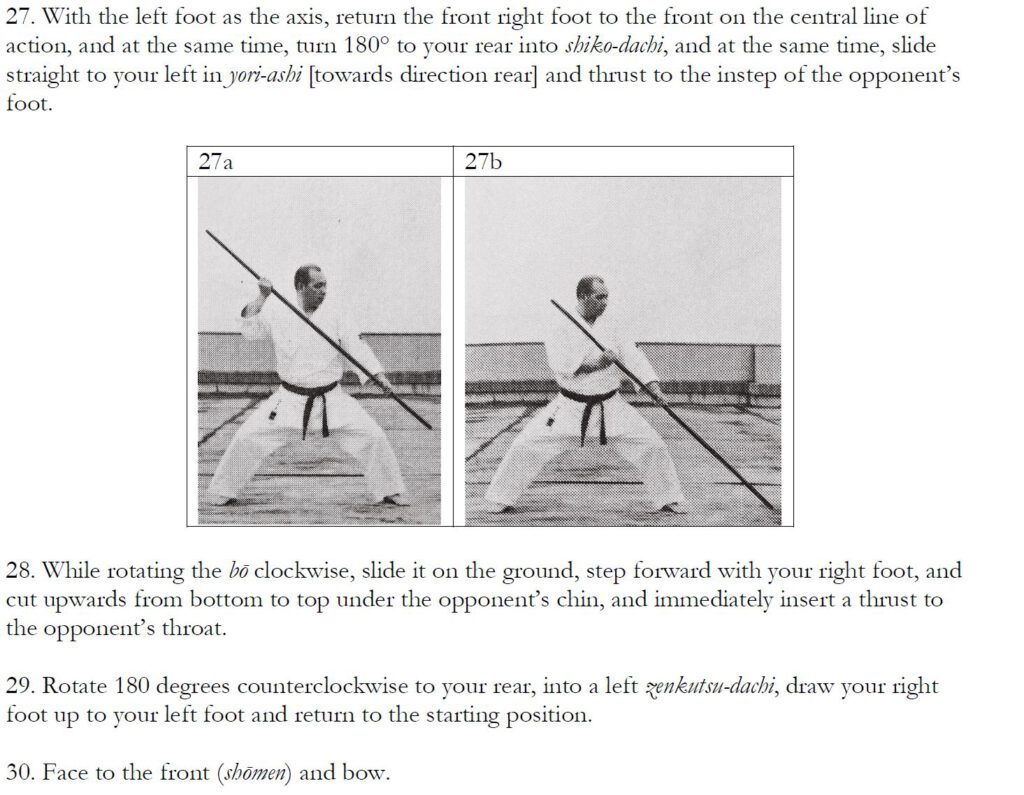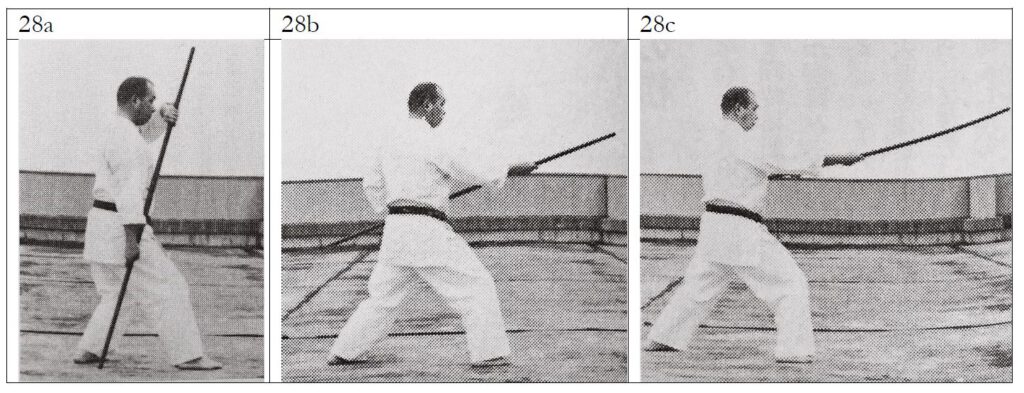Previously on this blog, I have written about a rare kata called Kuwae no Kon, otherwise also known as Torisashi Umē no Kon. Since my blog is widely read internationally, and since I have come to know many people from different schools of Okinawan martial arts, I also get a lot of feedback. This time, I have received various additional information from the USA and from Okinawa, which I use for this article here.
First of all, the kata in question is found described in the book Okinawa Karate Kobudō, written by Ebihara Isamu in 1983. Ebihara himself was a student of Kina Masanobu, who taught Kuwae no Kon. In the book, there is an introduction of both Kina Masanobu and Ebihara Isamu as follows:
Introduction of Kina Masanobu Sensei
Born in 1925 in a family that has inherited Okinawa karate and kobudō from generation to generation, he learned Okinawa karate and kobudō from his grandfather and father. In addition, he studied under teachers such as Kina Shōsei, Kyan Chōtoku, and Miyagi Chōjun.
Introduction of Ebihara Isamu
Born in Yoshikawa Town, Saitama Prefecture in 1941. He graduated from Chiba University and became a public high school teacher in Chiba Prefecture in 1964.
While working at his first school, Chōshi Municipal High School, he met Chitose Tadashi Sensei, who was Toyama Kanken’s senior disciple, and started karate.
In 1969, he went to Okinawa, which was still under the rule of the United States, and began training under Kina Masanobu. In 1975, he was certified as a Shihan of Okinawa Karate Kobudō.
In my previous article I have introduced a video of the kata as performed by Kina Masanobu himself. I also provided a short description of the techniques and enbusen as I was able to observe it from the video. However, the book by Ebihara contained a full description of the kata, including a number of photos. I have translated the description below. It is a typical and actually very good example of an how-to instruction using the method of text plus photo. In this way, a person who had learned the kata can forever remember the kata. I hope you enjoy it and maybe give it a try.
The description is almost the same as the techniques shown in the kata video. By the use of terminology and by additional information, details of the techniques become much more clear. For instance, there is a clear distinction between a horizontal torso strike and a more vertical head strike, which does not immediately become clear from watching the video. Moreover, targets of attacks are described here and there, as are body parts to be defended, which adds a lot of spice to the performance of the techniques.
There are two very important points to the description. The first is that one part of the kata is done at a 45° degree angle, which is not seen in the video. The second point is that there is a sunakake move and strike under the opponent’s chin at the end of the kata, which is not seen in the video.
I hope you enjoyed the description. That is all for now.
© 2022, Andreas Quast. All rights reserved.

